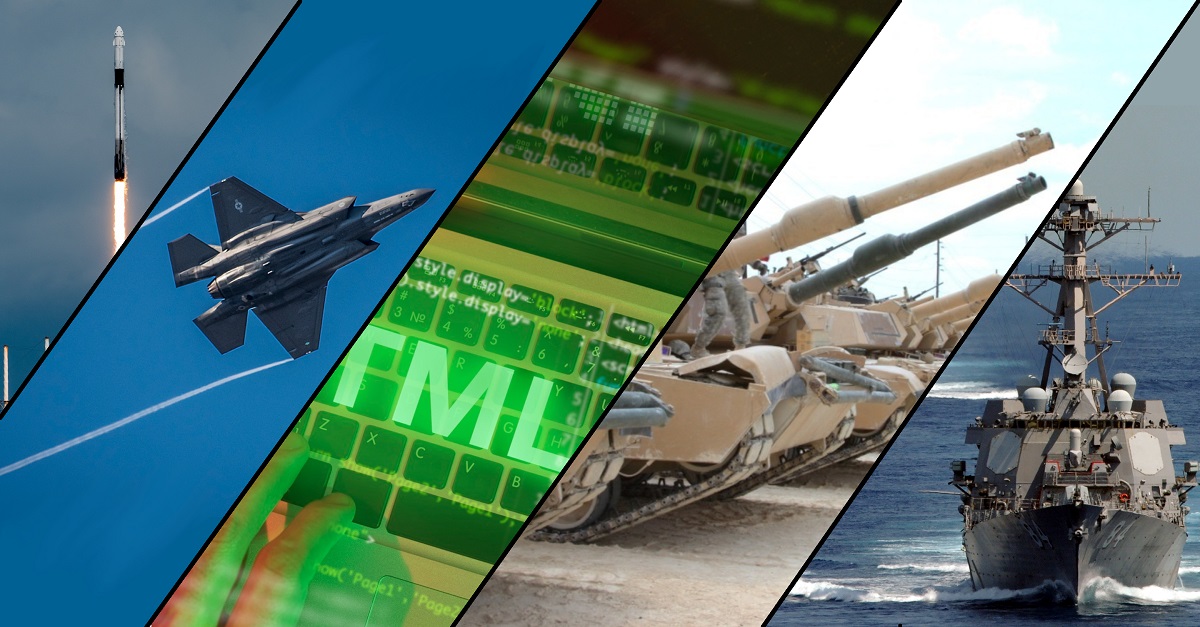
EDITOR’S NOTE: This is the second installment in a multi-part series that examines how professional military education should be designed. This and subsequent articles will look through the lens of the competencies required of officers as the global security environment changes once again. The collection of articles can be found in a collection here once they have been published.
“First, separate ground, sea and air warfare is gone forever. If ever again we should be involved in war, we will fight it in all elements, with all services, as one single concentrated effort.”
Our epigraph comes from then-President Dwight D. Eisenhower’s special message to the U.S. Congress, representing his views on the Reorganization of the Defense Establishment. It is the paradigmatic, epochal statement of jointness, ushering in a new era of military thinking that takes for granted the benefits of close interservice coordination. Even it was slightly premature (after all, it would take until the Goldwater-Nichols Act in 1986 for the U.S. Department of Defense to truly embrace a joint perspective, and some would argue jointness remains a challenge in practice), Eisenhower’s vision has proven remarkably prescient of the past half-century of military transformation. It seems odd, then, to contemplate designing officer education around a single-component perspective. Surely, if we have learned anything about the changing character of war in the modern world, it is that single services rarely fight alone? This article is a part of a series that explores the variety of legitimate approaches to developing officer competencies, focusing on how these play out at the intermediate level of professional military education (PME). We very much believe that a single-component perspective remains a viable, legitimate, and defensible approach, at least some of the time, in some places.
We therefore begin our series by looking at this most traditional end of the spectrum, where program owners follow the single-component approach by optimizing their program to educate their students in a single service (e.g. U.S. Army or the Royal Navy), its operational-level component (e.g. a Land Component Command (LCC) or Maritime Component Command (MCC)), and its core domain (e.g. the land or maritime domain). The single-component approach is certainly the most traditionally-grounded approach to military education, derived directly from the “kriegsakademie” tradition that originally gave rise to modern PME (see Libel, 2021). The question this short article seeks to answer is: under what conditions and for what ends should a program owner return to the traditional approach, optimizing their staff course (or equivalent) to prepare officers to become (even more) focused on their primary service? This article finds that a single-service competency focus is still useful in militaries today, both because it holds a value on its own, but also because it serves as a key to unlock “true” jointness.
Key Competencies for a Single Component Approach
As a starting point, it is safe to assume that any intermediate PME program requires that its students already have a basic proficiency at the tactical level of their own service. A single-component approach to intermediate PME would ordinarily educate officers of that same service background, maybe mixed in with a handful of students from other service backgrounds thrown in to support intellectual diversity and to build productive ties between services. As with any such program, the goal is to prepare students for the next stage of their careers. A single-component approach is therefore most appropriate for circumstances where students’ next career stage will be focused on that single-service environment.
For programs following a single-component approach, the latent assumption is that their students should exit the program better prepared to support their component command (rather than their service as such). In this sense, the single-component approach is just as warfighting-oriented as a joint approach, but is focused at a lower level of command. Accordingly, the main effort is likely to be on mastering military planning processes, particularly at the component level (as the name implies). Students will develop skills such as factor analysis, center-of-gravity analysis, operational risk assessment, operational design, course-of-action development, and so on. For many students, this will be an add-on to their existing knowledge of tactical-level planning, and so a single-component approach would typically end with students achieving the highest level of mastery in their domain (relative to the other approaches).
Typically, the planning skills will be tested through some form of exercise or simulation in order for students to learn about the execution of operations. Viewed from a joint functions perspective, the more kinetic functions will typically be the focus: fires, movement and maneuver, force protection and sustainment. The less kinetic functions (intelligence, information, and civil-military cooperation) may be given shorter shrift, since in practice these are the areas least integrated into core service identities, despite the theoretical suggestion in of warfighting principles that all functions are equal. Teaching command and control within a component-focused curriculum is likely to be fairly straightforward since students are thinking from a component rather than a joint perspective. A single-component approach would see students master the warfighting or joint functions within their service’s primary domain. This differs from the joint perspective, where the focus is more likely to be on interoperability and alignment across services.
The single-component approach also takes the most traditional view of officer competencies, focusing on the battlefield rather than on rear echelon and homeland considerations. Students may encounter the world of global politics through brief national security, civil-military relations, and Laws of Armed Conflict seminars. The challenge for instructors of such topics will be to link these concerns back to officers working within a component, and so it is likely these topics will be filtered through rules-of-engagement (ROE) lectures.
Other services, components, domains, instruments of national power, corporate entities and the like will all be given relatively little attention in such programs, and should be viewed primarily through how they disrupt the autonomy of the given component. When program owners commit to optimizing their program to a single-component approach, they are implicitly de-prioritizing the joint environment. In such cases, officers may be expected to pick up joint knowledge later, when and if it becomes applicable: what matters is mastering the student’s “home” domain. Furthermore, since the approach assumes a close link with the service, students in such programs are likely to be expected to master the existing or known near-future materiel owned by the service. Time spent on technologies owned by sister services, allied militaries, the private sector, or indeed existing only in the realm of the possible, would all logically cede precedence to mastering what does exist and is available.
For many educators, a staff course that focuses on a single-component approach would be guilty of a major omission: it would have failed to adequately prepare students for the joint character of modern operations.
Why Choose a Single-Service Approach?
The single-service approach has clear benefits for program owners, mainly because it has the clearest supporting to supported logic across the spectrum of legitimate approaches. The supported element is, of course, that part of the education informing students about their primary service. This, in turn, creates a strong link to the program’s key external stakeholder (presumably the service itself). There is a concomitant danger of “capture” when the program aims are too closely linked to the service’s aims: students may exit such programs with an excessive tendency to solve problems in the army or navy way, rather than in the best way for the given problem.
For many educators, a staff course that focuses on a single-component approach would be guilty of a major omission: it would have failed to adequately prepare students for the joint character of modern operations. A single-component approach should not be understood to mean that there is no time spent on learning about the joint aspect of operations, but rather that the overwhelming focus is on the parent service, and that other topics are taught from a perspective informed by that service. For example, students could be introduced to the joint environment by looking at how joint considerations affect the one domain they are already family with (rather than spend time exposing students to joint effects in other domains). U.S. Army or Royal Navy officers might be taught that joint operations are common and jointness is important, but what they learn about the joint environment would remain limited to how it relates to the LCC or MCC, as the case may be.
The single-component approach should be understood as complementary to a jointness approach. The single-component approach will further enhance a joint staff at a later time, by providing subject matter experts in their respective domain. This can be seen as the “key” to unlocking the full potential of joint operations, as the SMEs will have the intricate knowledge of their own domain. A joint staff will need to harness this knowledge, and have joint experts cooperating this to ensure interoperability between the services, to maximize the output from each service.
The single-component approach is likely to be of least interest to small countries expecting their officers to deploy and fight alone. Those countries would likely be better off investing time in their officers to master the joint level of their own country. For smaller countries expecting their officers to deploy in coalition or NATO alliance missions, a single-component approach could be preferable, since it would presumably allow those countries to deploy officers who are especially expert in their domain. An example of the former is Finland, which before its accession to the North Atlantic Treaty prepared its forces to jointly and alone. Preparing officers to work in a national joint setting would have been a logical approach. By contrast, Denmark, which has been a NATO member since 1949, and which shares no land border with Russia, spent over a decade deploying its forces into NATO and coalition missions in Iraq, Afghanistan, the Gulf of Aden, and beyond. At home, it had no national joint headquarters. While both countries’ geostrategic postures have recently changed, their very different situations just a few years ago would logically have led them to prioritize different sorts of competencies among their officers corps.
In the United States, most of the services can assert their own forces in multiple domains, and therefore a single service might have an inherent “jointness” to it. The U.S. Navy and U.S. Army possess some of the largest air forces in the world, and as such, can both insert dominance in their own domain and the air domain, without any help from the U.S. Air Force. Alternately, in smaller countries, it may appear obvious that the most pressing threats come from a single domain, and hence a single-component approach would be justified. In both examples, reasonable people could disagree on whether a single-component approach is the best choice, but in either case it remains a defensible choice. In conclusion, the single-component approach presents a distinct but complementary perspective to a joint approach. It emphasizes specialization within a particular service or domain, downgrading the focus on how that service or domain connects to others. While the joint approach typically prioritizes interoperability and cooperation across services, the single component approach aims to maximize expertise within a specific service or domain. Like the joint approach (but different than other approaches discussed in this series), the single-component approach will often emphasize the more kinetic functions when teaching relevant competencies, and will typically spend relatively little time on the less kinetic functions, on the challenges of operating with non-military actors, and on understanding new technologies. Indeed, a single-component approach is likely to expose officers to the narrowest perspective on material and technology. While a single-component approach shares much with the joint approach, it is perhaps best viewed as a commitment to ensuring officers master their own service’s areas of responsibility, even while anticipating that their officers will deploy in joint settings.
Thomas Crosbie is an Associate Professor of Military Operations at the Royal Danish Defence College. He is the series editor of Military Politics (Berghahn Books) and has published widely on topics including the military profession, military politics, Professional Military Education. He is currently the director of the Educating Future Warfighters Project.
Holger Lindhardtsen is a researcher at the Institute for Military Operations at the Royal Danish Defence College. He is a project member of the Educating Future Warfighters Project, focusing on competency development for future conflicts.
The views expressed in this article are those of the author and do not necessarily reflect those of the U.S. Army War College, the U.S. Army, or the Department of Defense.
Photo Description: L-R: A SpaceX Falcon 9 rocket launches from Space Launch Complex 40 at Cape Canaveral Space Force Station, Florida, Sept. 28, 2024; An F-35 Lightning II streaks across the sky while doing maneuvers to the Eglin Air Force Base runway; The cyber domain; The M1A2 Abrams Main Battle Tanks from 3rd Battalion, 8th Cavalry Regiment, 3rd Brigade, 1st Cavalry Division, line-up in roster number order on the Blackwell Multiuse range May 8, 2014, on Fort Hood, Texas; The Arleigh Burke-class guided-missile destroyer USS Bulkeley participates in a strait transit exercise.
Photo Credit: L-R: U.S. Space Force photo by Senior Airman Spencer Contreras; U.S. Air Force photo/Samuel King Jr.; Image by freepik; U.S. Army photo released by Spc. Marcus A. Floyd; U.S. Navy photo by Seaman Jared M. King.

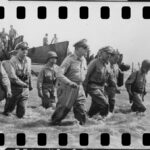
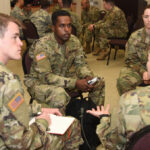
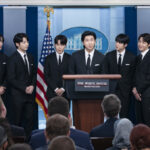
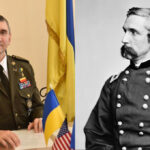
Having established — at my comments at the initial thread in this series (WHAT ARE THE OPTIONS? A COMPETENCY DEVELOPMENT APPROACH FOR PROFESSIONAL MILITARY EDUCATION) — that the global security environment today consists of at least four types of U.S./Western opponents/competitors/enemies (great powers like Russia and China, lesser powers such as Iran and N. Korea, non-state actors such as the Islamists and even certain conservative/traditionalist groups here at home in the U.S./the West) — ALL OF WHOM do not wish to be transformed more along ultra-modern/ultra-contemporary U.S./Western political, economic, social and/or value lines and ALL OF WHOM are willing to use/are using all their instruments of power and persuasion to prevent, and/or to roll back, these such unwanted changes —
(In this regard consider, for example, the existential threat posed — to all four of these entities — by this portion of the NATO Madrid Summit Declaration of 29 June 2022: “2. We are united in our commitment to democracy, individual liberty, human rights, and the rule of law. We adhere to international law and to the purposes and principles of the Charter of the United Nations. We are committed to upholding the rules-based international order.”)
Having identified this such global security environment, only now, I suggest, can we move on to determine which sets of competencies — at the intermediate level of military education — we should focus on, to wit: single-service operations competency sets; joint operations competency sets; low-intensity conflict and irregular warfare competency sets; hybrid warfare competency sets; multi-domain operations competency sets; or technological innovation competency sets.
(If indeed — given the global security environment that I describe above — we can really limit ourselves to having expertise in only one — or only a few — of these such competency sets????)
Note that the global security environment that I describe above encompasses/helps explain (a) our “great power conflict/competition” with Russia and China, (b) our “lesser power conflict with nations like Iran and N. Korea, (c) our “war on terrorism” with non-state actors like the Islamists and (d) our problems with certain conservative/traditionalists groups here at home in the U.S./the West.
In this regard, and as relates to the arguments made by authors Crosbie and Lindhardtsen in their article/item immediately above, would an intermediate level of military education — focused primarily/exclusively on “single-service operations competency sets” — best serve our nation’s needs?
Another way of looking at the global security environment that I point to in my comments in this series, this is from the perspective of a New/Reverse Cold War, one in which, this time, it has been the U.S./the West that has attempted to achieve revolutionary political, economic, social and/or value change both at home and abroad (in our case, in the name of such things as capitalism, markets, trade, etc.) and one in which, this time, it has been the U.S./the West — DUE SPECIFICALLY TO OUR SUCH “ACHIEVE REVOLUTIONARY CHANGE” POLITICAL OBJECTIVE — that has found itself to be at odds/in conflict with both great powers and smaller powers, with both state and non-state actors and with opponents both at home and abroad. (All of whom are threatened by — and all of whom thus resist — with all their elements of power, influence, etc., available to them — these such revolutionary changes).
(This, much as the Soviets/the communists found themselves to be at odds/in conflict with these exact same set of opponents [great powers and small, state and non-state actors, opponents in both their home countries and abroad), in their case, when they pursued achieving revolutionary political, economic, social and/or value changes both at home and abroad during the Old Cold War.)
Bottom Line Question — Based on the Above:
Are nations pursuing revolutionary political, economic, social and/or value change — both in their own home countries but also throughout much of the rest of the world (much as the Soviets/the communists did during the Old Cold War and much as the U.S./the West has done post-the Cold War); are these such “achieve revolutionary change both at home and abroad” nations best served by embracing an intermediate level of military education focused on single-service operations competency sets; joint operations competency sets; low-intensity conflict and irregular warfare competency sets; hybrid warfare competency sets; multi-domain operations competency sets; or technological innovation competency sets?
Note: When threatened by great powers seeking to achieve revolutionary political, economic, social and/or value change both in their own home countries but also throughout much of the rest of the world (such as the Soviets/the communists attempted to do in the Old Cold War and such as the U.S./the West has attempted to do in the post-Old Cold War); when threatened in this manner, one of the best and historically common things that diverse threatened entities (such as great and lesser powers, state and non-state actors, and individual and groups both in one’s home countries but also abroad) do — in circumstances like this — to resist and to defeat these such “achieve revolutionary change both at home and abroad” great powers — this is emphasizing — and indeed “weaponizing” and championing — such things as everyone’s (including the “achieve revolutionary change” great power’s) traditional social values, beliefs and institutions.
Question — Based on the Above:
Which of the intermediate level of military education “competency sets”‘ — listed by our authors in this series of articles — would have best prepared the military forces of the Soviets/the communists back in the Old Cold War of yesterday — and would best prepare the military forces of the U.S./the West in the post-Cold War — to (a) defeat such “resisting change” opponents using (b) such “weaponization of everyone’s traditional social values, beliefs and institutions” methods/approaches/tactics?